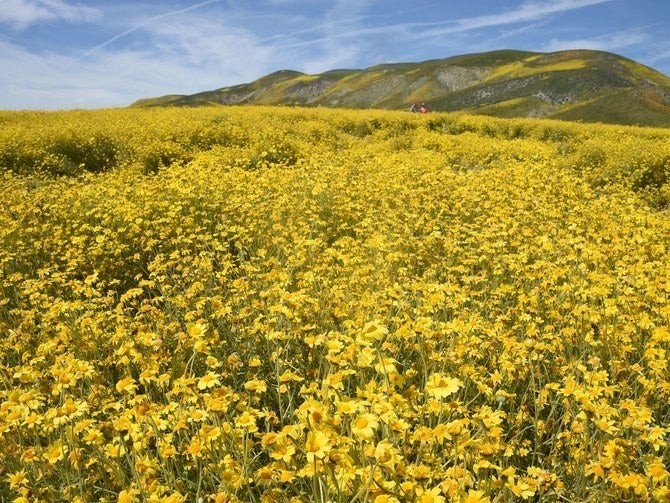For Architectural Digest, by Marissa G. Muller.

Visitors walk among hillside daisies in the Carrizo Plain National Monument near Taft, California during a wildflower "super bloom," April 5, 2017.After years of drought an explosion of wildflowers in southern and central California is drawing record crowds to see the rare abundance of color called a super bloom.
Your Instagram feed isn’t the only thing being clogged by California’s “super bloom.” According to a report by the National Park Service, invasive species are thriving and suffocating the local ecosystems because of the very same conditions that led to the bloom. “A new super bloom has begun to dominate many hillsides throughout the Santa Monica Mountains: invasive plants,” it reads. “It’s an ongoing problem that this year’s heavy rains have only exacerbated.”
One of the biggest culprits is black mustard, which, despite its name, is the yellow flower that is often captured in photos of the Super Bloom, specifically on the trails of Zuma and Trancas Canyons in the Santa Monica Mountains. Another is carnation spurge, which the National Park Service describes as “a toxic relative of the holiday favorite poinsettia plant.”
“There are over 300 non-native species in the Santa Monica Mountains, but a core group of them are what we consider the ‘evil 25,’ ” explains Joey Algiers, restoration ecologist for Santa Monica Mountains National Recreation Area, in the NPS dispatch. “Native plants are the foundation of an ecosystem that supports a diversity of wildlife, all the way up to mountain lions. Besides that, the spring crop of weeds will soon dry out and become a fire hazard, creating a large load of fine fuels that are dry longer, ignite quickly, and spread flames faster than native shrubs.”
This isn‘t the first report that highlights the dark side of California’s Super Bloom. Earlier this month, word spread that the precious flowers brought to life during this time were being trampled on at the expense of selfies. “Most people were very cognizant of not trampling,” said Dustin McLain, natural resource manager with Riverside County Regional Park and Open-Space District. “There were a good portion who were trying to do the right thing but just didn’t.”
More from Architectural Digest:
